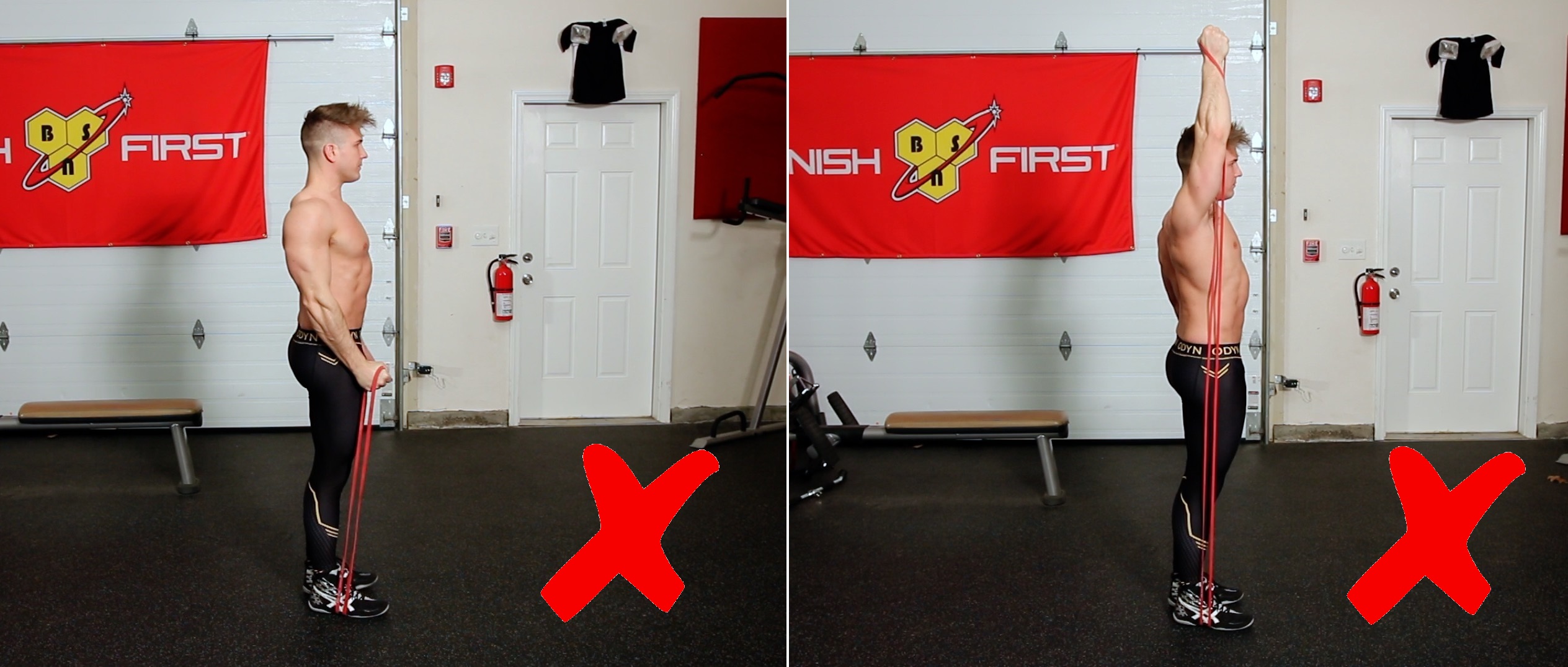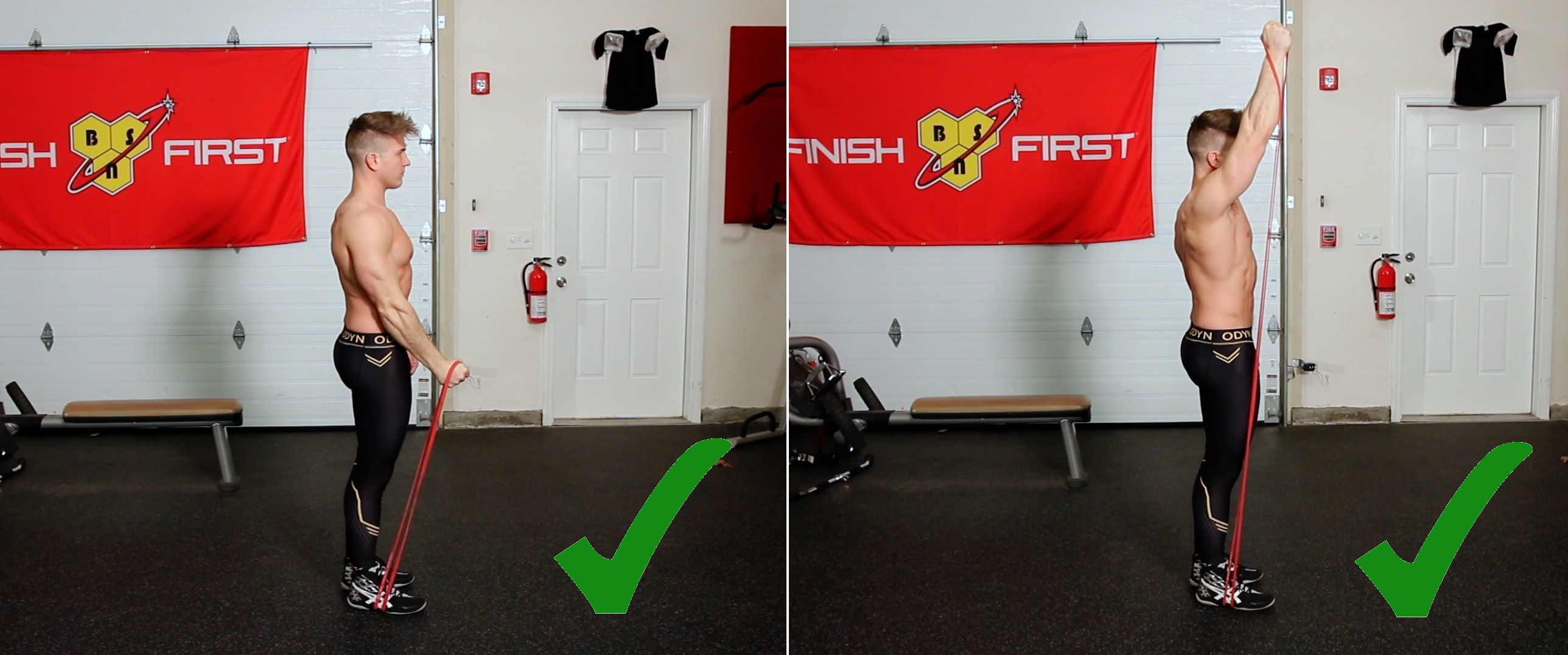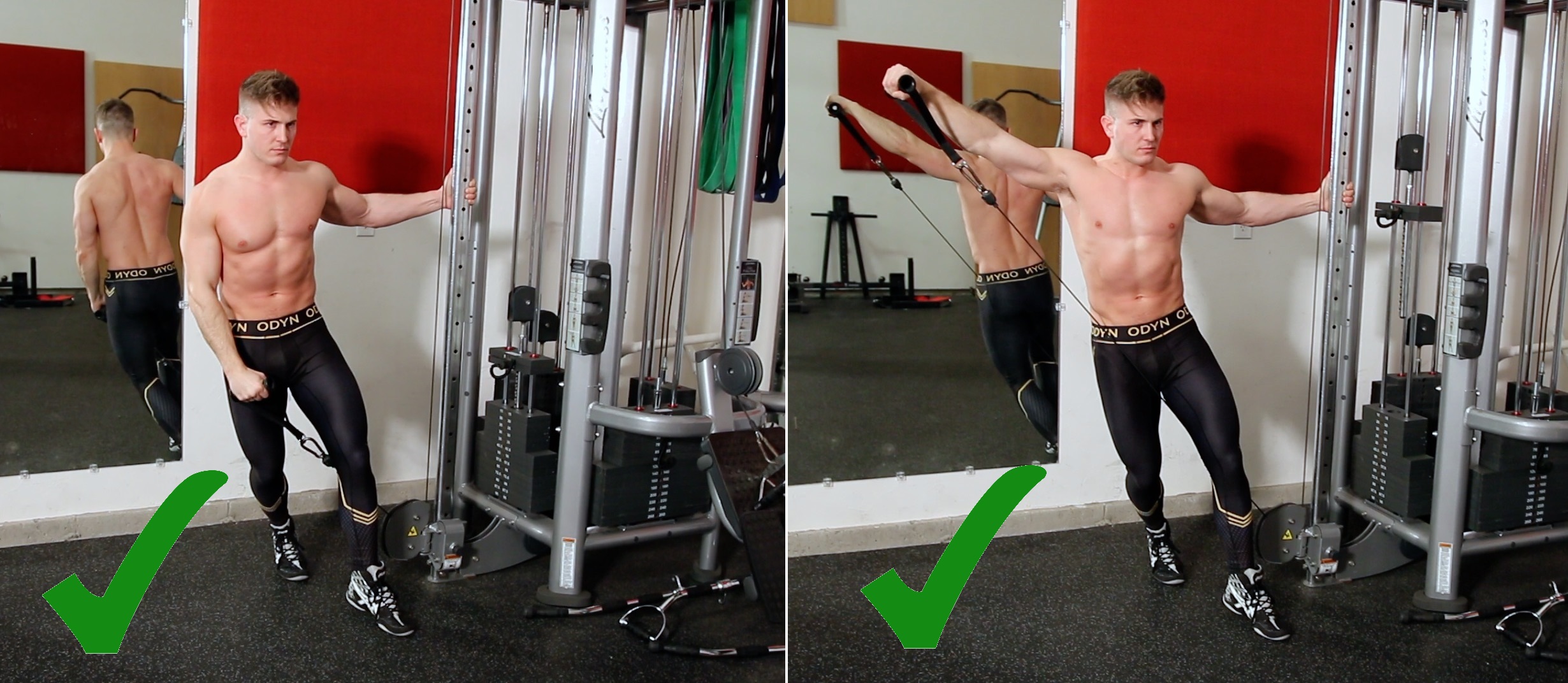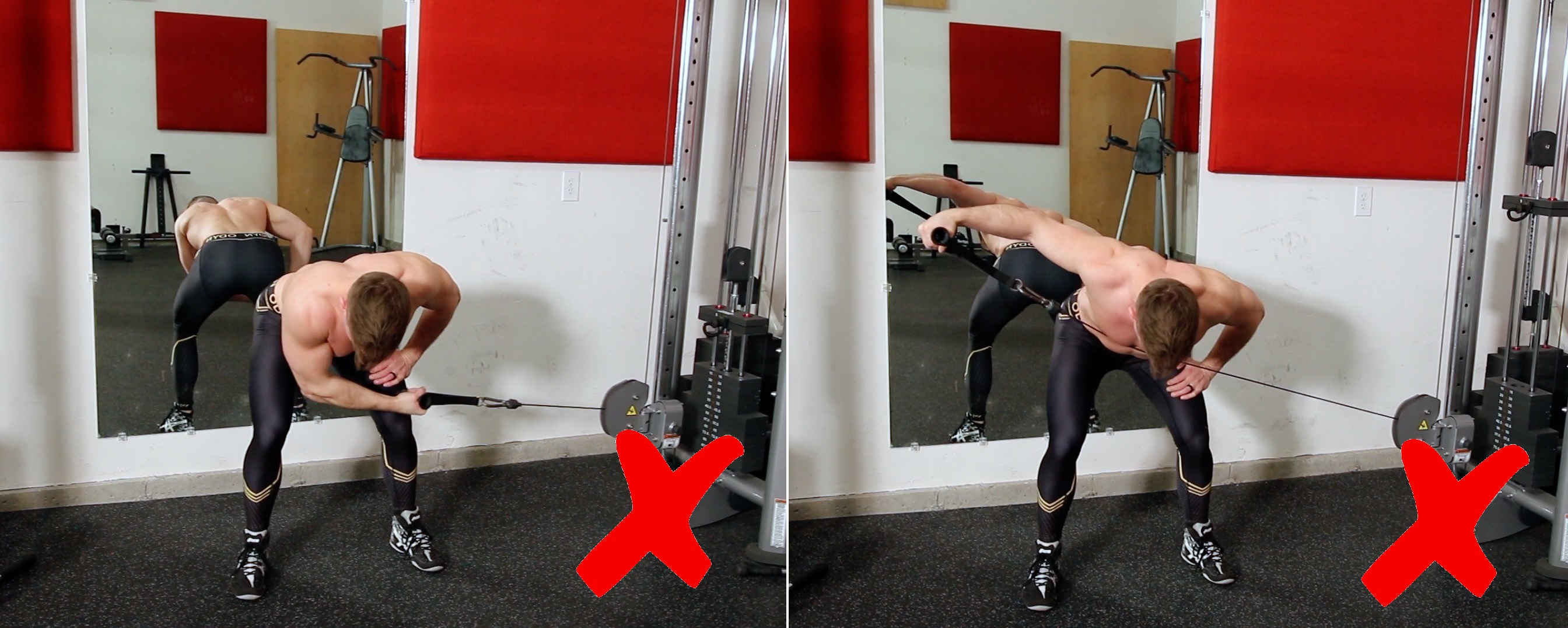Instant Shoulder Activator
The "Non-Responder" Solution! All Three Heads!
Today we’re going to continue with the non-responder series, and we’re going to talk about shoulders. We’re going to go over exercises for all 3 heads of the delts, but this is going to be a little different to what we did for chest and back. For chest and back, I explained how to use OTHER exercises before doing your main movements, to help establish a stronger mind-muscle connection (MMC).
When it comes to the shoulders, in order to establish a stronger MMC with various movements, you actually need to take a step back and away from barbell or dumbbell presses, dumbbell raises, or whatever you are currently doing for your shoulder workout. Instead, you need to do some very SPECIFIC movements in order to target each head properly to correct your form, and then establish an even stronger MMC to those muscles.
Front Deltoids
The majority of people have a hard time growing their shoulders because no matter what they’re doing (front, middle or rear delts), they start to bring more chest or more upper back into the movement. That typically happens because either their form is off, their lifting more weight than they should, or both. When it comes to the front delts, what happens is most people try to lift too much weight, and quickly realise that when their shoulders are protracted, they’re not able to lift as much comfortably. This means they tend to bring their shoulders back, and then lift the weight.

Yes, you’re able to lift more weight this way, but as soon as you go from protraction to retraction, you start to bring a lot more upper chest into that movement, which is why you’re able to lift a bit more weight. You need to re-teach your body to only hit those front delts as hard as possible through the entire range of motion. I’m going to cover how you can get a better MMC of the front delts with a resistance band, but you can use a cable machine for this exercise too, just use the same form.
Front Raise (3 – 4 Sets: 8 – 10 Reps Per Side)
If you are using a resistance band, I want you to stand on it on the ground. However, instead of retracting your shoulder blades, I want you to stand neutral, and then bring your shoulder forward slightly for SLIGHT protraction. Don’t force anything or bring your shoulders too far forward, as this can cause pain and impingement. Grab the resistance band so that there is tension at the bottom of the movement, then lift the band up and over your head as high as you can.

What’s good about the resistance band is you’re going to keep tension on the front delt at the top of the movement, and as long as there’s not a lot of slack, you’ll also have a bit of tension at the bottom as well. When you use dumbbells for this, or even a barbell (which is OK to do), obviously what happens is once you pass about your chest or chin level, you start to lose tension because you shift from lifting the weight to literally holding it above your head. With the resistance band, you start at the bottom, go all the way to the top, and then bring it back down, controlling the movement through the entire range of motion. So stop using dumbbells, stop using a barbell, and just grab a resistance band so you can re-teach your body how to activate those muscles.
Middle Deltoids
The reason why a lot of us have a hard time engaging the middles delts is for 2 reasons. The first reason is obvious – you’re using weight that’s way too heavy. The second reason is people again tend to retract their shoulder blades. If you’re retracting your shoulder blades and then using weight that is way too heavy, it shortens the range of motion, and it probably means that your upper back and traps are doing most of the work, rather than the middle delts.
Lateral Raise (3 – 4 Sets: 8 – 10 Reps Per Side)
The way I want you to do lateral raises for the next couple of weeks is on the cable machine. The reason why you’re going to use a cable machine is for a couple of different reasons. Number one – when you grab the handle and step away from the machine, the weight is suspended the entire time. What that means is you have constant tension throughout the entire range of motion. I want you to have the cable BETWEEN your legs, and then you need to post on the cable machine and lean to the same side as the deltoid you are working. This will help you get a bit more range of motion at the top of the movement, while keeping tension on the middle delt.


The other thing you can do, which I recommend, is instead of keeping your arm straight, slightly turn your wrist over forward. But the most important thing you have to keep in mind when doing this movement to REALLY hit those middle delts, is you want to feel like you’re pulling the weight AWAY from your body. There’s a huge difference between lifting the weight up, and lifting it AWAY. I guarantee you’re going to have to lower the weight quite a bit to do it. You’re going to keep a slight bend in your elbow, keep your arm either neutral or slightly protracted again (DO NOT retract your shoulders), lift the weight AWAY from your body, then come back down to the starting position, and repeat for reps.
Rear Deltoids
We’re going to see a lot of the same patterns happening when we go to the rear deltoid. A lot of the time people have a hard time feeling the rear deltoid working because again, the shoulder blades are being retracted. Another problem is people will have too much a bend in the elbows, which will mean you engage a lot more rhomboids and upper back, even though you can lift more weight. The rear deltoids are engaging, but you’re not REALLY able to isolate them properly to create that MMC.

Rear Raise (3 – 4 Sets: 8 – 10 Reps Per Side)
To correct this, I want you to again use a cable machine, so you can start really feeling those rear deltoids engage throughout the entire range of motion. Once again, you’re not going to retract your shoulder blades, you’re going to keep them neutral or slightly protracted throughout the entire range of motion. The other thing you’re going to focus on is, again, pulling the weight AWAY from the body rather than lifting it UP with as much weight as you can. Obviously when doing rear deltoids, you want to be bent-over with your chest parallel to the floor as well.
You want to keep a slight bend in your elbow, pull the weight away from your body, but then you want to go one step further than that as well. You want to externally rotate your wrist so that your thumb faces backwards, and you will feel a lot more engagement in your rear deltoid this way. Flex and squeeze at the top, then come back down to the starting position and repeat for reps.

Conclusion
As you can see, you’re trying my best to focus on every single movement in such a way that you are building a stronger MMC. That is the purpose of this series, it’s not about lifting as much weight as possible. By focusing on tips like this, it means when you try something like my Cheat & Recover program, or start overloading in general, you know how to activate the right muscles on every single lift.








